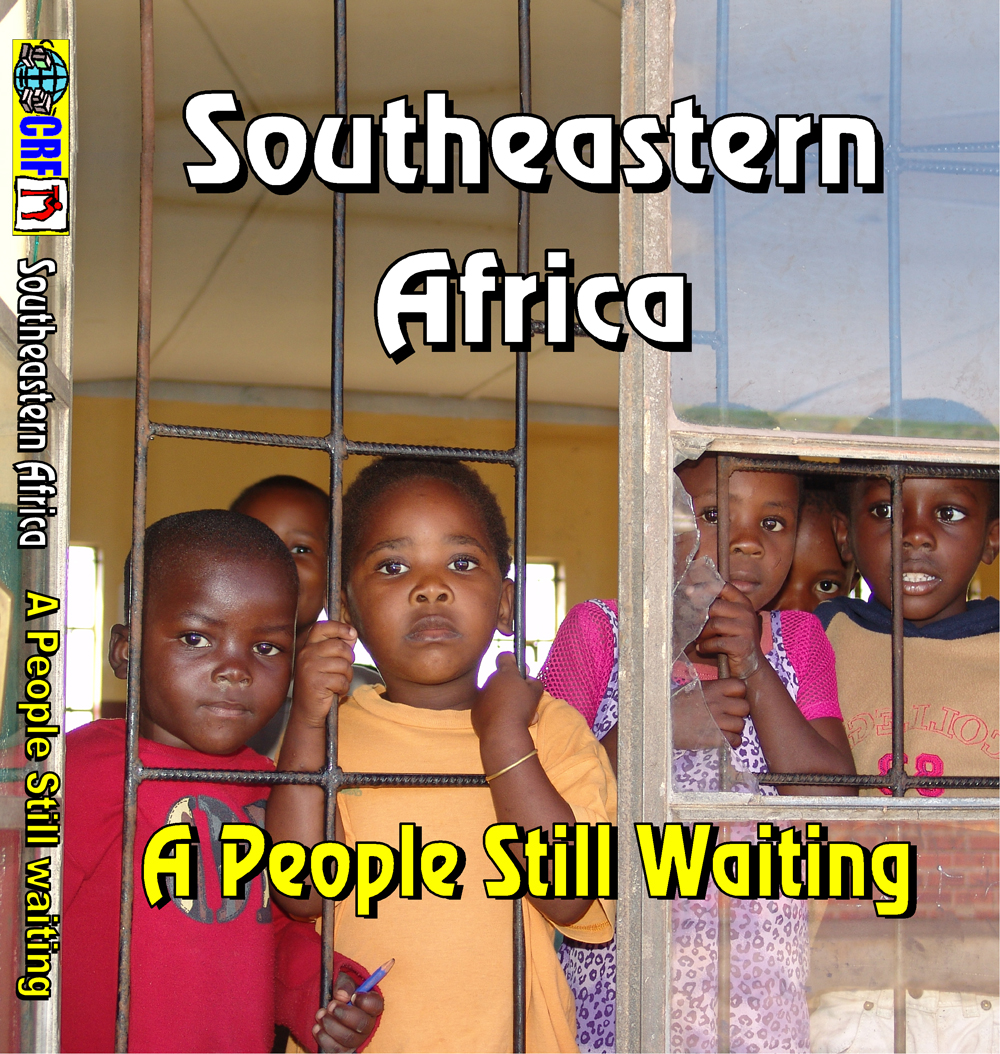|
|
00-17 Southeastern Africa 17 Chapters (144:14) Script: SE Africa 2005.pdf 03/25/2023 A People Still Waiting
2005 Introduction
Chapter (25:31)
This was our first trip with our recently acquired high-definition camcorder which provided much better quality video but with greater risk. The danger of robbery, kidnapping and extortion was all around requiring a guard while working in many of the densly populated areas. We were fortunate to be able to conduct many personal interviews with the local people Ė all of whom spoke good English. Often, there were unexpected opportunities such as the special musical presentation by the Bethlehem Choir in Orange Free State. We also recorded an excellent musical presented by the children at the Ugome School near Empangeni in the Province of KwaZulu-Natal. Time for relaxation was short but the overnight at Kruger National Park was an interesting respite for us. Located in the Northeastern part of South Africa it is one of the largest game reserves in Africa. One of the mission teams asked me to photograph the various cemeteries in and around Johannesburg, from an airplane to document the overflowing cemeteries caused by the HIV/AIDS epidemic. It was an interesting excursion but the flight was too rough for video. However, some excellent still photos were obtained of the cemeteries as well as several other areas around the city. The overcrowded burial places are a sad result of HIV/AIDS infection involving over 25% of the adult population. Often, children must be cared for by their grandparents or placed in an orphanage after both the mother and father have died of AIDS. |
 01 Introduction (8:20) A People Still Waiting -- Waiting for a taxi, waiting for a job, waiting for the monthly pension check, waiting for a better life, waiting for the ancestors to answer, waiting to die of AIDS. South Africa won its freedom from Colonial Britain in 1960 and from the repressive Apartheid government in 1994. Now they are enslaved to fear, poverty, corruption, and false religions - so they are ďA People Still WaitingĒ for their freedom. |
 02 Soweto: Cloud of Uncertainty (9:41) The southwestern side of Johannesburg is generally known as Soweto, short for Southwest Townships. This is a huge district of heavy industry, small shops and people that stretches as far as the eye can see. It sprawls over an area of 50 square miles and encompasses 4 million souls. Yet, only a few miles away are the high-rise buildings of Johannesburg. They seem to be of another country, of another continent. |
 03 13202 Johannesburg, S. A. (5:45) A family lives at this address. We know because the yard is clean. In Johannesburg, there are millions of homes similar to this but often in more crowded places; places without water, sewage and refuse removal; places rife with drugs and crime; places where the police fear to enter. |
 04 Building a Church (6:34) My vision is to start a church, which would never sleep. What do I mean is because the internationals - most of them are people who do not have a permanent accommodation so, they need to be somewhere they can just seek God - the face of God. The international community living in Tshwane, the capital of South Africa. Over 100 embassies are here representing countries from all the continents. |
 05 Daniel and Joseph: Lights (9:28) Daniel and Joseph are shining lights in a land of darkness - a land in which few know Jesus Christ as a friend and as their savior. In this land, there are many who profess to be Christians. They call themselves Apostolic or Zionist. Badges and emblems worn as protection against evil spirits can identify some. Their lifestyle and their spiritual allegiances are rooted in cultural traditions and ancestor worship. |
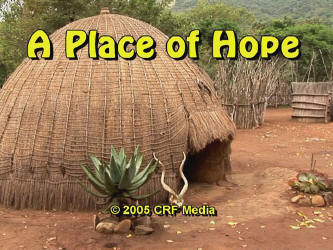 06 A Place of Hope (12:37) About 80% of the Zulu claim to be Christians. They have adapted their pagan worship system to include some Christian beliefs. It is imperative to reach the Zulu with the true Word of God to correct all the false teaching that abounds. With the end of Apartheid in 1994, the Zulu have begun to experience many new freedoms. They have a new hope. Pray that their eyes might now be opened to seek and find Christ. |
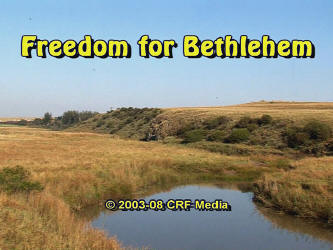 07 Freedom for Bethlehem (9:10) The Basotho maintain a deep animistic tradition, which ties them to the land and to the past. Their traditional healers, serve as a medium between the people, the spirit world, and the ancestors. The sangomas can be identified by their wrist or ankle bracelets, necklaces and often, as part of their uniform, a cross. Fear is the common denominator and force behind their belief system. |
 08 The People with Invisible Barriers (7:20) Walls that protect the lives and property of residents in Southern Africa are common. These barriers, easily seen but difficult to cross, are accepted as a way of life. But, there is a different kind of barrier that is only apparent to some. It is the barrier that surrounds the Deaf person. It is a barrier that is ever-present but serves no tangible purpose. Rather than a wall of brick and mortar, it is a barrier of communication. |
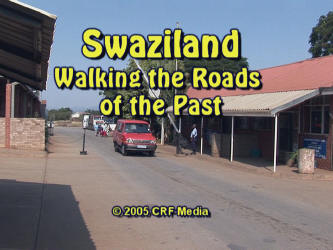 09 Swaziland: Walking the Roads (8:45) Leaving South Africa and driving through a hand-operated gate is like traveling back in time. The small sign at the border crossing confirms what one can feel - this is Swaziland! Today, with one million people, it remains one of the few absolute monarchies in the world. It is a land of beauty, a land of traditions, a land of wealth, a land of poverty. But, it is also a land where 40% of its people are infected with HIV/AIDS. |
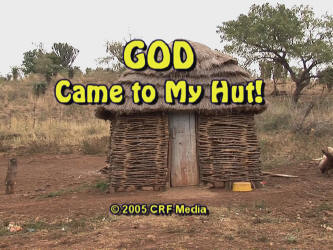 10 God Came to My Hut (3:24) "I was lost. Beating the drums. I didnít know who God was. GOD CAME TO MY HUT!. His Word was preached and I accept Him as my personal savior.Ē Mr. Ephriam Mkhaliphi and some of his extended family live in a group of huts called a homestead. Today, there is a church at Ntuthwakazi homestead and Mr. Ephriam Mkhaliphi is the pastor. The drums do not beat in this homestead. God is in these huts. |
 11 The Peace Ladies - Leading (3:52) The ladies from Peace Baptist Church continue to reach out in taking the leadership in learning about Godís Word through regular Bible studies. The preschool they have started meets in the same sheet-iron building that is used for their Bible studies and Peace Baptist Church. Pray that their dedication to God will remain strong. |
 12 Opening the Gates (4:25) Nkosingiphile helps us in understanding the culture and the people living in the rural areas of Swaziland. Opening the gates was very important to us as we tried to better understand the Swazi people. By the time we arrived it was dark and the Thunzini Baptist Church worship service had begun. Our friend is the pastor here and taught from Godís Word. Some followed along in their Bibles illuminated only by a candle. |
 13 More Than a Soapstone Carver (3:09) Robert has been carving soapstone for many years. Just behind the craft market where his workshop is located is a small preschool - an ideal place for a neighborhood Bible study. Steve, with Maria his translator, began chronological Bible storying; starting from Genesis and eventually going through the whole Bible. Will you pray for Robert as he seeks Godís will to be more than a soapstone carver? |
|
 15 Thy Word is Truth (9:12) Religious beliefs and illusions are often mixed with some truth. These worshippers claim to be Christians. Many wear crosses on their uniforms. These Zionists have mixed some Christian beliefs with their African traditional religion. They continue their belief in the spirit world, worshipping their ancestors and trusting in the sangomas. The people in Durban and Pietermaritzburg need to know that THY WORD IS TRUTH. |
 16 Finding a Believer in Mpumalanga (10:04) Believers in Jesus Christ should be everywhere in the Mpumalanga Province of South Africa. A recent government survey revealed that - of its 3.1 million people - over 2.2 million believe they are Christians. There are many different and complex beliefs and rituals among the Zionists. They have a very limited knowledge of the scripture and are, in reality, followers of their leader. |
|
Statement About Video Use U.S. copyright laws protect all media material produced by CRF Media. Posting the videos on alternate web sites is NOT ALLOWED. Fragmentation of the material is STRICTLY FORBIDDEN. THEY ARE NOT TO BE USED IN ANY WAY FOR COMMERCIAL APPLICATIONS. |
|
|
|
|
